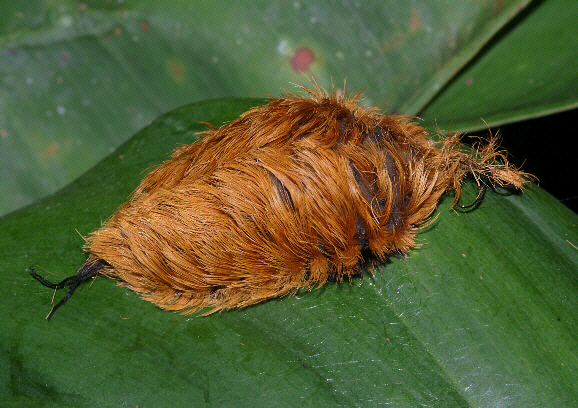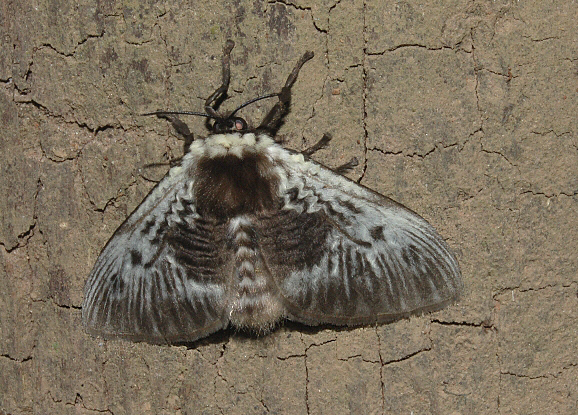
Megalopyge or Podalia sp, Pantiacolla, Rio Alto Madre de Dios, Peru – Adrian Hoskins
Introduction
There are about 220 species in the family Megalopygidae, the vast majority of which are found in the neotropics, with a few representatives in North America and Africa.Virtually all the species have bizarre and often very beautiful caterpillars, but the adult moths are by comparison extremely dull, generally being blackish or ochreous in colour.
Habitats
The illustrated caterpillar was found on palm leaves in a glade in primary forest at 400m on the Rio Madre de Dios in Peru.
Lifecycle
The extraordinary looking object illustrated above at first appears to be a downy seed or nut, but is actually the fully grown caterpillar of a Flannel moth. It’s tempting to handle this furry creature but to do so would be unwise. Hidden beneath the soft hairs are poisonous spines which pierce the skin and can cause an extreme allergic reaction resulting in rashes, blisters, inflammation, and breathing difficulty.
Adult
Adults of Megalopygidae are generally sombre in colour, although there are a few exceptions with yellow wings or red abdomens. Their wings are small in relation to their wide muscular thorax and long furry abdomen. The antennae are pectinate and conspicuous – some genera such as Norape and Aithorape have orange or bright red antennae contrasting with pure white wings. The adult illustrated below is a species from Brazil, Megalopyge albicollis. The caterpillar illustrated above may not necessarily be the same species.

Megalopyge albicollis, Rio Cristalino, Mato Grosso, Brazil
